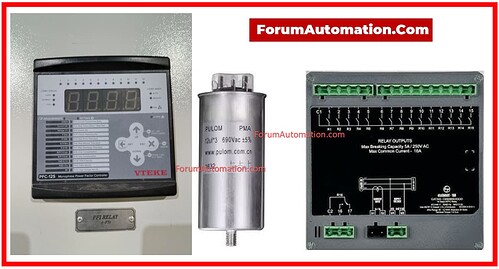What is a Power Factor Relay?
A Power Factor Relay is a control device that constantly detects a system’s power factor and turns capacitor banks on or off to keep it close to unity (or a set value such as 0.95 lagging).
Why PF Relay is needed?
In industries, motors & inductive loads lower power factor.
Low PF causes:
Utilities impose higher demand costs.
Overloading transformers, wires, and switchgear.
Reduced system efficiency.
A PF relay manages capacitor banks to provide automatic power factor adjustment (APFC).
How PF Relay Works?
The relay detects voltage, current & phase angle (difference).
Power factor (PF) is calculated as cos φ.
Compare the measured PF to the desired PF (set value).
Control Action:
If the PF is less than the target (lagging), the relay switches the capacitor on.
If PF exceeds target (leading), the relay switches the capacitor off.
Continuous regulation involves altering capacitor banks as load conditions differ.
Applications of PF Relay
Industrial plants with high motor loads.
Commercial buildings with central HVAC and elevators.
Tools for reactive power control.
Automatic Power Factor Control panels (APFCs).
Characteristics of Modern Digital Power Factor Relays
LCD/LED display of PF, kVAr, voltage, and current.
Programmable switching sequences.
THD (harmonics) measurement in advanced models.
Communication possibilities (RS-485, Modbus, etc.).
Alarm/trip functions for low/high PF or voltage.
An APFC panel’s Power Factor Relay optimizes capacitor switching, reduces penalties, saves energy & enhances electrical system efficiency.
You can also follow us on AutomationForum.co, Facebook and Linkedin to receive daily Instrumentation updates.
You can also follow us on ForumElectrical.com , Facebook and Linkedin to receive daily Electrical updates.
